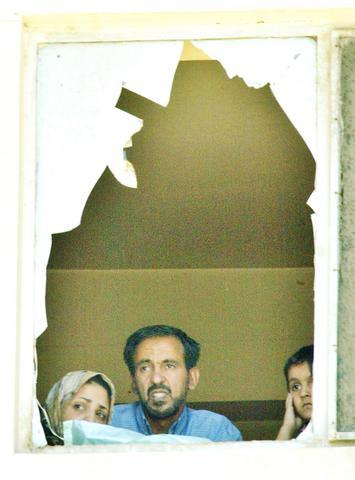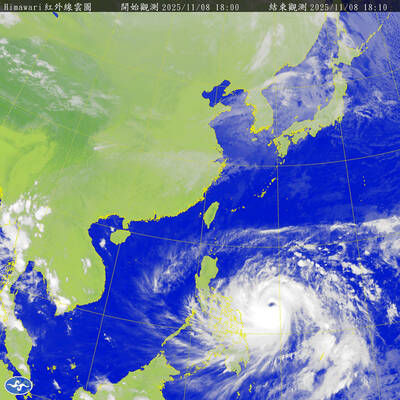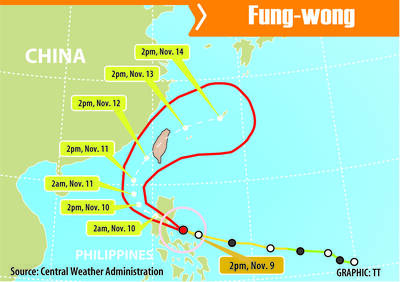US President George W. Bush on Wednesday asked Congress for an additional US$25 billion to fund military operations in Iraq and Afghanistan, breaking a pledge not to seek more money before the November election.
The White House had long insisted it would not need extra money until next year, but the surge in violence in Iraq and pressure from fellow Republicans forced Bush to reverse course. If approved by Congress as expected, the proposed US$25 billion "contingency reserve fund" would become available to the Pentagon from Oct. 1, the beginning of the 2005 fiscal year.
"Recent developments on the ground and increased demands on our troops indicate the need to plan for contingencies. We must make sure there is no disruption in funding and resources for our troops," Bush said in a statement.

PHOTO: AP
White House budget director Joshua Bolten briefed top Republican lawmakers on Wednesday on the US$25-billion plan, which a senior administration official compared to an "insurance policy" that would only be tapped if needed to avoid funding disruptions.
The new money would come on top of US$160 billion in Bush's two previous spending bills for Iraq and Afghanistan, and officials said far more money would be needed next year.
"This is not money for Iraq, this is money for our troops, this is supporting our troops. Nobody is going to have any problem with that," House Majority Leader Tom DeLay, a Republican, told reporters.
"Frankly, I think this money won't be enough, but it will be enough to get us through until the administration requests a major supplemental," added House Appropriations Committee Chairman Bill Young, a Republican.
Officials said the US$25 billion should tide the Pentagon over from Oct. 1 through next January or February, when the White House is expected to request another US$50 billion or more for the troops. A senior administration official said the size of the next supplemental would depend on how much of the US$25-billion reserve fund is spent.
Critics accused the White House of hiding the true cost of the war by not asking for money it knew would be necessary.
"The Bush administration essentially said `read my lips -- no extra money for Iraq,'" said Democratic Senator Frank Lautenberg. "Now we see that pledge was false."
"By requesting just US$25 billion in additional money for our troops in Iraq -- when we know that at least twice that amount will be needed -- the Bush administration is once again keeping the true cost of the war from the American people," said House Democratic leader Nancy Pelosi.
Before the war, then-White House budget director Mitch Daniels predicted Iraq would be "an affordable endeavor," and Deputy Defense Secretary Paul Wolfowitz even assured Congress: "We are dealing with a country that can really finance its own reconstruction and relatively soon."
The White House denied misleading the public, and a senior administration official played down the impact on the US$500-billion-plus budget deficit "because it's not necessarily clear that this reserve will be spent."
The new request comes one day after the Pentagon, faced with growing military casualties in Iraq, said it was scrapping a plan to reduce its forces and would keep about 138,000 troops there to at least the end of 2005.

The Central Weather Administration (CWA) yesterday said it expected to issue a sea warning for Typhoon Fung-Wong tomorrow, which it said would possibly make landfall near central Taiwan. As of 2am yesterday, Fung-Wong was about 1,760km southeast of Oluanpi (鵝鑾鼻), Taiwan’s southernmost point, moving west-northwest at 26kph. It is forecast to reach Luzon in the northern Philippines by tomorrow, the CWA said. After entering the South China Sea, Typhoon Fung-Wong is likely to turn northward toward Taiwan, CWA forecaster Chang Chun-yao (張峻堯) said, adding that it would likely make landfall near central Taiwan. The CWA expects to issue a land

The Central Weather Administration (CWA) yesterday said it is expected to issue a sea warning for Typhoon Fung-wong this afternoon and a land warning tomorrow. As of 1pm, the storm was about 1,070km southeast of Oluanpi (鵝鑾鼻), Taiwan’s southernmost point, and was moving west-northwest at 28 to 32kph, according to CWA data. The storm had a radius of 250km, with maximum sustained winds of 173kph and gusts reaching 209kph, the CWA added. The storm is forecast to pass near Luzon in the Philippines before entering the South China Sea and potentially turning northward toward Taiwan, the CWA said. CWA forecaster Chang Chun-yao (張峻堯) said

PREPARATION: Ferry lines and flights were canceled ahead of only the second storm to hit the nation in November, while many areas canceled classes and work Authorities yesterday evacuated more than 3,000 people ahead of approaching Tropical Storm Fung-wong, which is expected to make landfall between Kaohsiung and Pingtung County this evening. Fung-wong was yesterday morning downgraded from a typhoon to a tropical storm as it approached the nation’s southwest coast, the Central Weather Administration (CWA) said, as it issued a land alert for the storm. The alert applies to residents in Tainan, Kaohsiung, Pingtung and Taitung counties, and the Hengchun Peninsula (恆春). As of press time last night, Taichung, Tainan, Kaohsiung, and Yilan, Miaoli, Changhua, Yunlin, Pingtung and Penghu counties, as well as Chiayi city and county had

The Central Weather Administration (CWA) yesterday issued a sea alert for Typhoon Fung-wong (鳳凰) as it threatened vessels operating in waters off the Pratas Islands (Dongsha Islands, 東沙群島), the Bashi Channel and south of the Taiwan Strait. A land alert is expected to be announced some time between late last night and early this morning, the CWA said. As of press time last night, Taoyuan, as well as Yilan, Hualien and Penghu counties had declared today a typhoon day, canceling work and classes. Except for a few select districts in Taipei and New Taipei City, all other areas and city